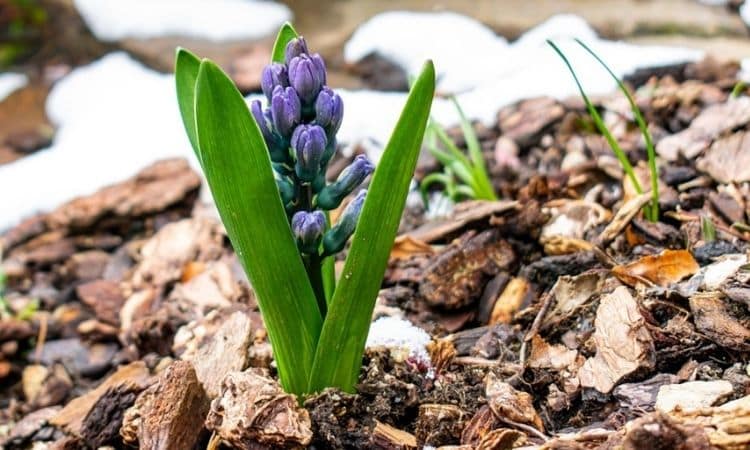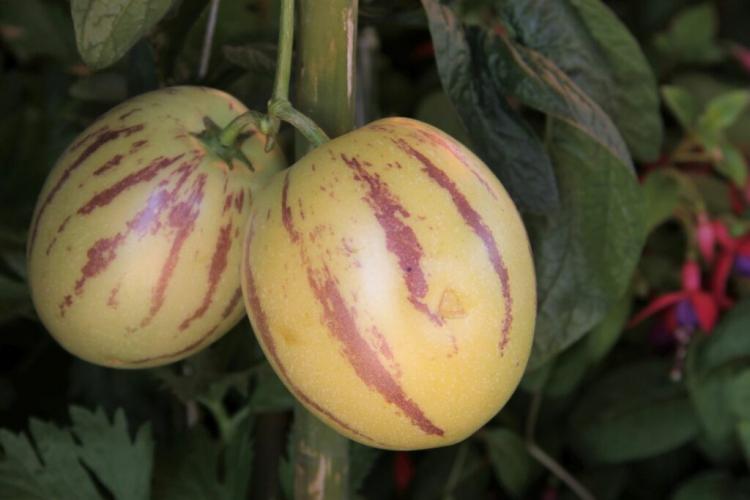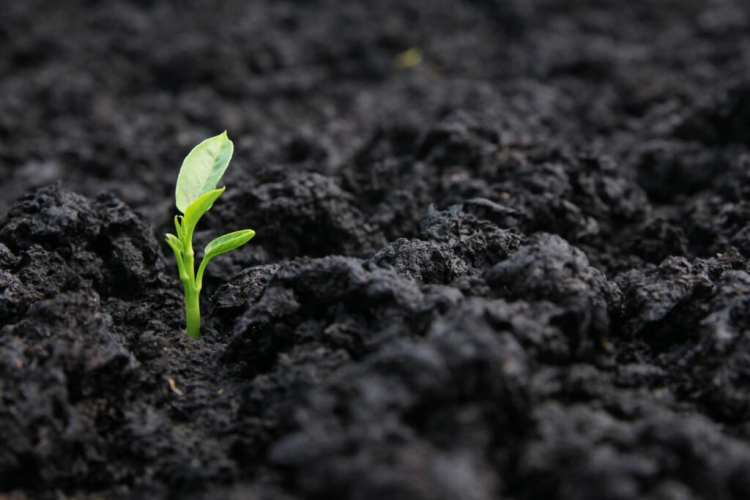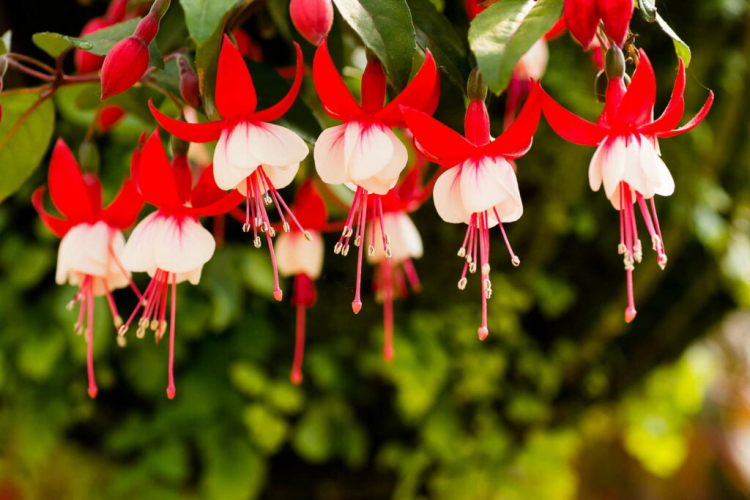Butterfly Friendly Plants: The 10 Best Species
What would a garden be without butterflies? We show you 10 butterfly-friendly plants that will also attract colorful butterflies to your garden.
Whether young or old, butterflies with their colorful exteriors and their playfully easy flight have always caused amazement in the eyes of all generations. But the colorful insect is worth protecting not only because of its beauty. What few people know is that butterflies are among the most important pollinators in the garden and are thus true beneficial insects. Wild plants in particular are often dependent on butterflies for pollination, but some species also reliably pollinate useful plants.
Caterpillar feeding, on the other hand, which many gardeners fear, is often not a problem – in fact, caterpillars also prefer wild plants such as stinging nettle (Urtica), dock (Rumex), or various grasses. If the caterpillars do attack a garden plant, they cause unsightly feeding spots, but as a rule, the plants do not die. If you let the caterpillars, most plants recover quickly and you will be rewarded with colorful garden inhabitants.
What Distinguishes Butterfly Friendly Plants
Table of Contents
When creating a butterfly-friendly garden, you should especially have the adult moths in mind and not the dainty caterpillars, because nectar plants for the adults are especially lacking. Caterpillars, on the other hand, usually find enough food sources thanks to nettles and wild herbs, so they don’t have to rely on specially created beds.
However, both butterflies and caterpillars are happy to have an overgrown corner in the garden where wild plants are also allowed to grow. For those who prefer pretty flowers, here are the ten best butterfly-friendly plants that attract colorful butterflies to the garden.
1. Globe Thistle
Ball thistle (Echinops ritro) really has a modern, almost bizarre look with its spectacular globe flowers that seem to float high above the ground on slender stems. Now, if a butterfly also lands on the extravagant ball of flowers, the sight is hard to beat. In fact, like almost all species of thistle, the striking-looking globe thistle is one of the most important sources of nectar for butterflies, especially the thistle butterfly.
2. Privet
Privet (Ligustrum vulgare) can be found in many gardens – no wonder, after all, the plant is ideal for hedges and can also be nicely trimmed into shape. In addition, privet is considered to be extremely uncomplicated and robust. But the plant can do even more: for many German butterfly species, such as the large ox-eye or the small fox, the plant is an ideal food source because its delicate white flower panicles provide precious nectar. This interplay of appearance, robustness, and butterfly-friendliness makes the privet a must for every garden.
3. Phlox
Providing a veritable sea of blooms, phlox is a true magnet for beneficial insects such as bees and butterflies. The plant, also known as the flame flower, provides a firework of color in the garden from June to September and is thus one of the important food sources for butterflies. But also its easy-care nature supports the popularity of the beautiful flower.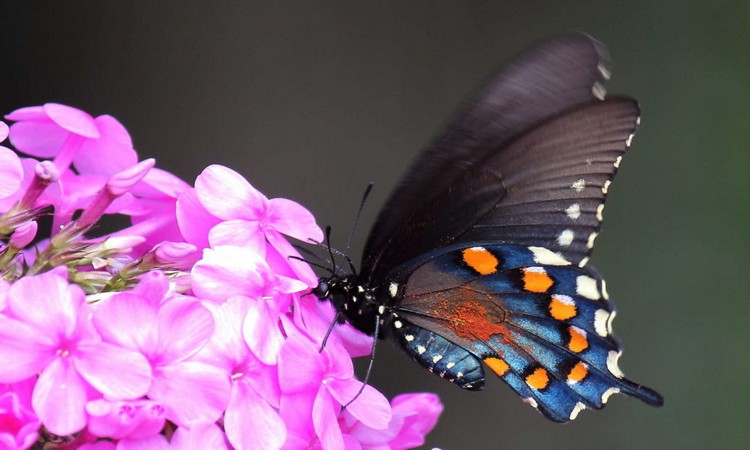
4. Purple Loosestrife
Don’t worry – even if the name of the purple loosestrife (Lythrum salicaria) sounds a bit creepy at first, it hides an extremely attractive plant that knows how to impress with large dark pink flower corollas. At best, thirsty butterflies could explain the eerie name of the plant: These actually fall like vampires over the plant. C butterflies and the small fox, in particular, like to help themselves to the abundant nectar offered by the beautiful flower. But moths also depend on the plant: It plays an important role as a food plant for their caterpillars.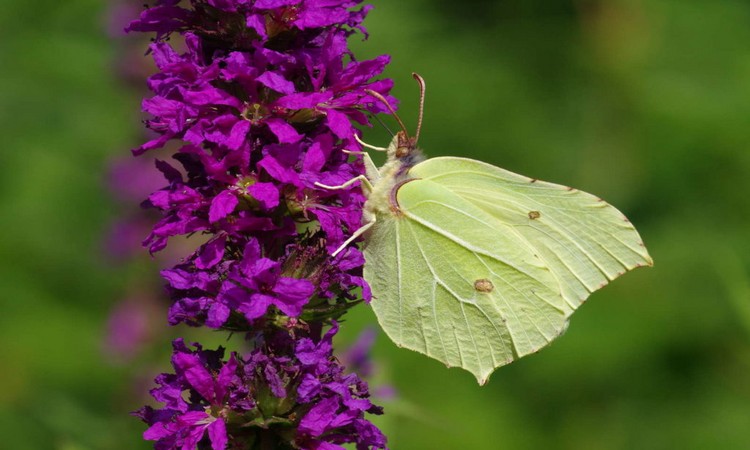
5. Evening Primrose
Even though we usually think of the colorful day butterflies when we think of butterflies, in fact about 80% of all butterflies belong to the moths, i.e. they only become active in the late evening hours. For this reason, moths are particularly attracted to plants that only develop their full aroma at dusk. Evening primrose (Oenothera) is one of these butterfly-friendly plants: With its brilliantly beautiful flowers, which bloom from June to September, the plant is an ornament to any garden and proves to be a reliable magnet for butterflies.
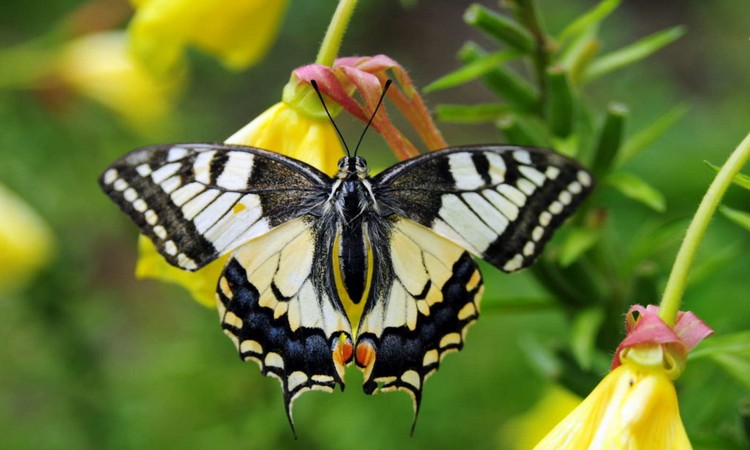
6. Medicinal Valerian
Medicinal valerian (Valeriana officinalis) is probably known to most as a calming medicinal plant for anxiety disorders and insomnia. But the plant can do much more: Valerian convinces in June and July with its large white or pink flower umbels, which also exude a wonderful smell. But not only people appreciate the perennial: Butterflies such as the fritillary butterfly seek out the plant for its nectar, and the caterpillars of the valerian fritillary butterfly also use the plant as a food source. In addition, the plant is also very popular with cats – they react to it in a similar intoxicated way as they do to catnip (Nepeta).
You might so like: Insect Friendly Flowers: For A Buzzing Garden And Balcony
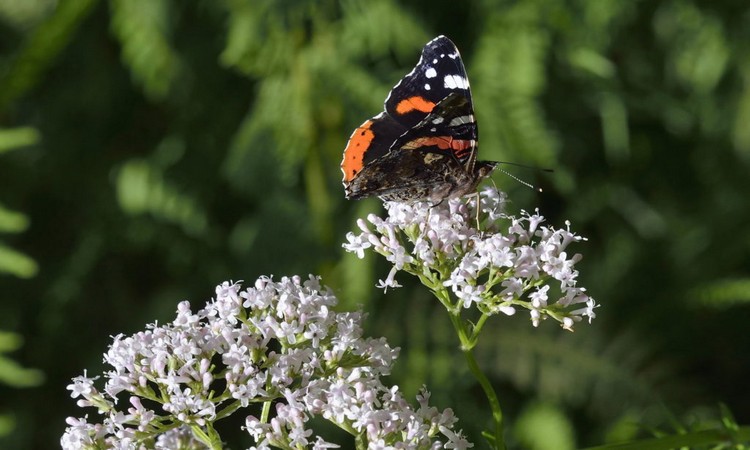
7. Lavender
With its unique appearance and irresistible smell, lavender (Lavandula) transforms any garden into a Mediterranean oasis. At the same time, the plant is a true jack-of-all-trades: not only is lavender considered extremely easy to care for, but it also shines with its healing powers and edible flowers. The purple lavender even repels mosquitoes, while beneficial insects such as butterflies are almost magically attracted to it. From the white butterfly to the small fox, almost all butterfly species seek out the plant as a food source sooner or later. Only as caterpillar food, the plant is not very popular.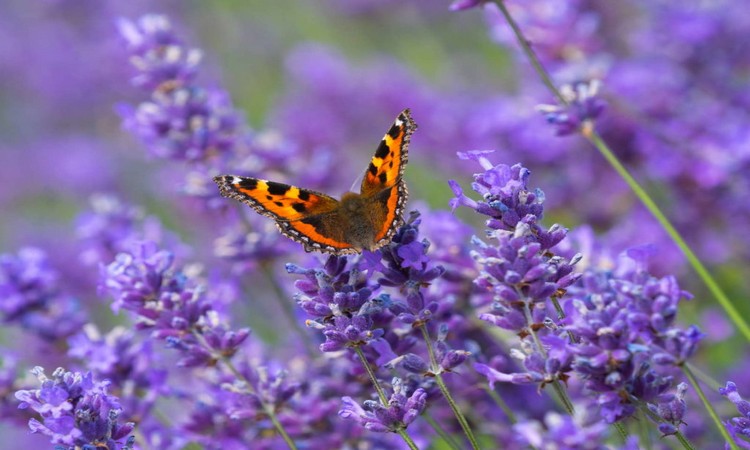
8. Purple Stonecrop
A big problem for butterflies flying even in late summer is that many summer flowers have already faded. Fortunately, the purple stonecrop (Hylotelephium telephium) provides a remedy: starting in July, the plant displays its large, almost umbrella-like inflorescences, which often last into the winter. Thus, the plant ensures that peacock butterflies and C butterflies still find plenty of food in the fall. The plant is particularly interesting for gardeners because, as a succulent, it is not only especially beautiful but also very robust – drought, heat, and temperatures down to -68 °F do not bother the butterfly-friendly plant.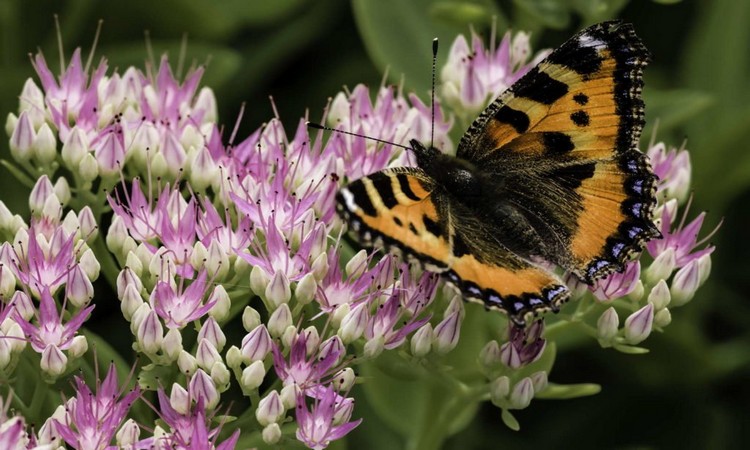
9. Sal Willow
Sal willow (Salix caprea) is an important nectar source for butterflies and bees. It is the only native willow species that grows outside of swamps and floodplains. It blooms as early as late winter in March and April, providing a food base for insects in the spring. Peacock butterflies and lesser fox, among others, fly to the Sal willow. The caterpillars of many nocturnal moths, as well as a few diurnal butterfly caterpillars, also feed on its leaves.
10. Sage
As a medicinal plant and spice, sage (Salvia) is probably familiar to most people and can already be found in many gardens. But it is not only its spicy aroma and undemanding nature that make the plant so popular with gardeners – its purple flowers, which appear from June to August, also make the plant a real eye-catcher.
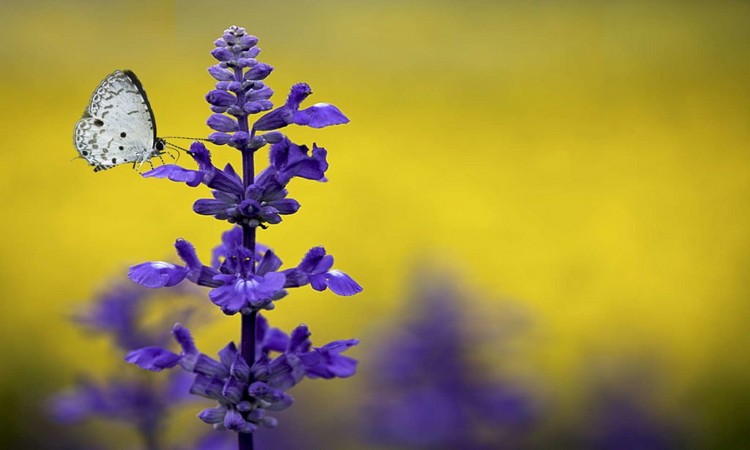
Butterflies are particularly taken with the small flowers – the fact that the nectar is hidden deep inside the flower gives the long-trunked insects an enormous advantage over other pollinators, securing a lucrative source of nectar. The meadow sage (Salvia pratensis) in particular is a popular food source for butterflies such as the blue butterfly and the famous swallowtail.

